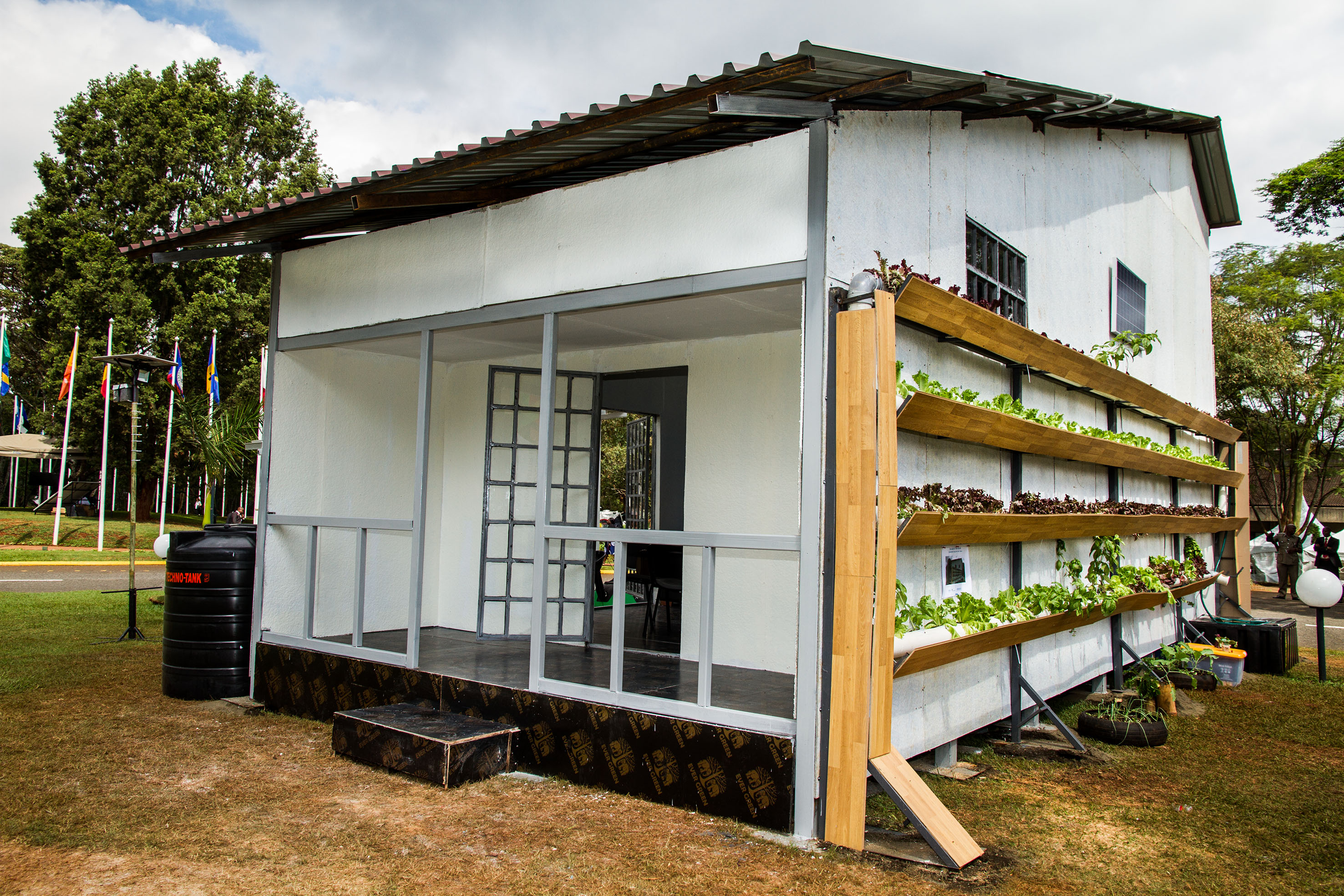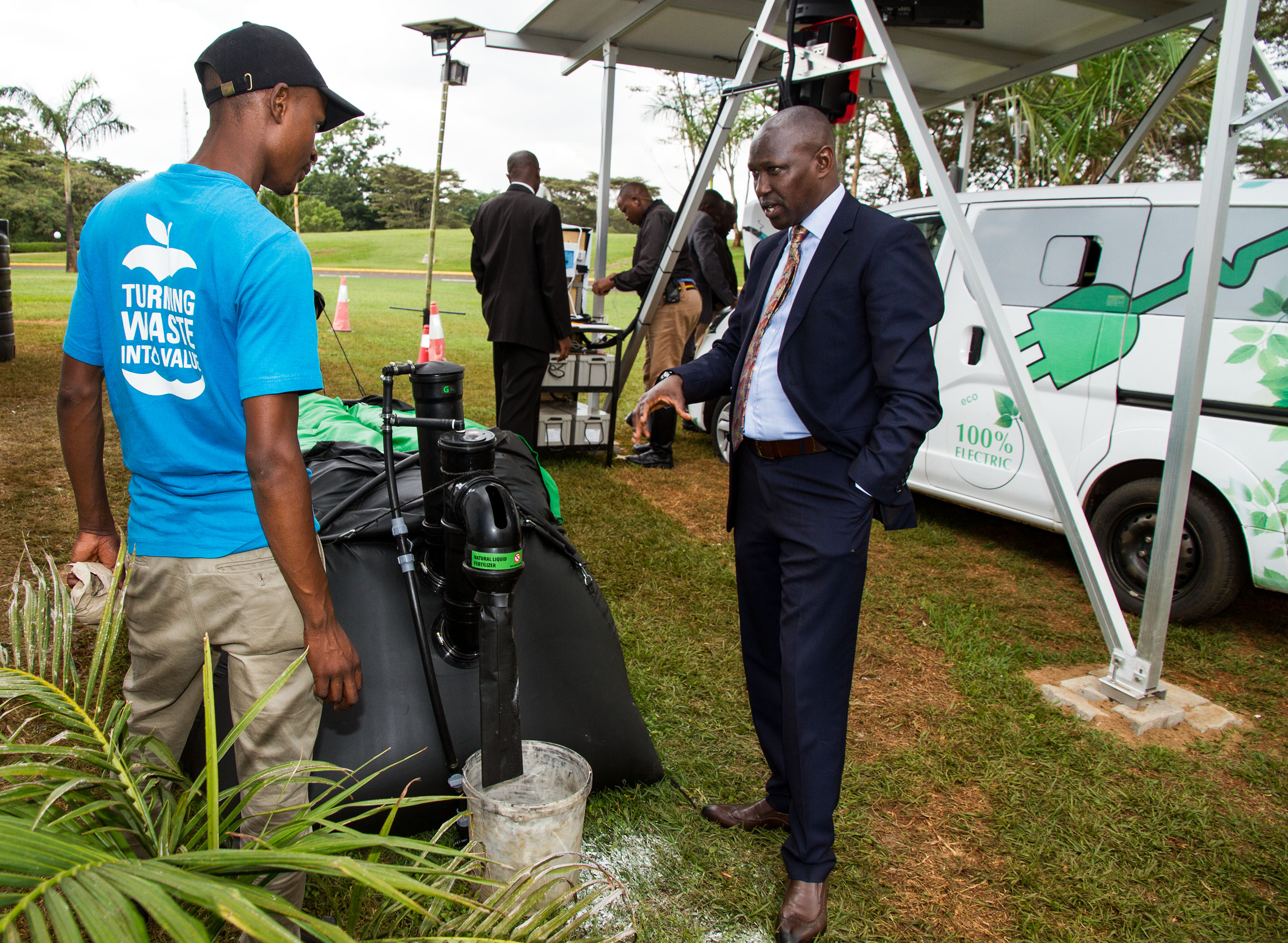Sustainable development and affordable housing are some of the biggest challenges facing national and local governments, particularly in emerging economies.
This is where UN-Habitat’s Sustainable Living Unit in the Tropics comes in. Dubbed the “UN-Habitat Tiny House”, it approaches the challenges of sustainable and affordable construction by combining the traditional principles of passive environmental design with technological innovations in waste management, renewable energy and water conservation.
The compact design has a small footprint on the ground, lowering land demand, yet it maintains a spacious feel because of innovative, space-saving techniques.
Low cost homes are important:
Around the world one billion people - one in eight people - live in informal settlements. Despite great progress, including a decrease in slum population from 39% to 30% between 2010 and 2014, slums remain a critical factor in the persistence of poverty and exclusion from access to equal opportunities.
Environmentally sustainable homes are crucial:
The built environment is also a significant contributor to environmental degradation. In 2010 the worldwide building sector was responsible for 24% of the total Green House Gas (GHG) emissions from fossil fuel combustion - second only to the industrial sector. If the embodied energy of construction materials is factored in, that figure increases and the building sector is the prime GHG emitter.
These challenges significant to the African context. Most modern buildings in tropical African cities are powered by fossil fuel, because they tend to be replicas of building designs from northern countries which have cooler temperate climates. Buildings in Africa are estimated to use 56% of the total electricity consumed by the continent.

Solutions can come from innovating in construction:
With innovative techniques in adapting the way we build, we have an opportunity to improve the environmental efficiency of homes in their construction and their running. Construction can be improved with resource conservation and energy efficiency.
Passive design strategies cut down on the energy demands of the house by eliminating the electricity required for lighting during the day as well as for mechanical heating and cooling. These strategies include the orientation of the building along the East-West axis, location of secondary spaces such as balconies, sun-shading and the use of natural light and ventilation. These strategies cut down the solar heat gain in the interior of the house and ensure the free flow of fresh air without relying on mechanical systems.
How the UN-Habitat Tiny House responds to these challenges:
The UN-Habitat Tiny House is sustainably serviced. Power is supplied by a solar panel system and cooking gas from a home bio-digester. This also takes care of some of the unit’s sanitation needs. Water is sustainably managed by water efficient fixtures and rainwater harvesting systems. The aquaponic system merged into the unit design allows the family to grow their own fruit and vegetables, decreasing demand on land and water for food production and transportation.
The two bedroomed Tiny House is 56 m2 including the verandah. It uses integrated storage in the staircase and furniture to save on space and is accessible by people with special needs. The unit is designed in a modular way, allowing it to be adapted to specific contexts and for incremental development of the unit, horizontally and vertically, it also has an African design feature, with both an indoor and outdoor kitchen.
This prototype — developed with the support of Urban Pathways and other partners — provides a feasible and affordable housing solution using innovation and frontier technologies to decrease the resources required to build it and to maintain it. When adapted to the diverse climatic and socio-cultural needs of the tropics, the UN-Habitat Tiny House will help meet the pressing demand for low cost housing while minimising demand on our natural resources (energy, water, construction materials, land). This UN-Habitat Tiny House can do big things.

Article: Anne Musotsi
Banner image: Kirsten Milhahn